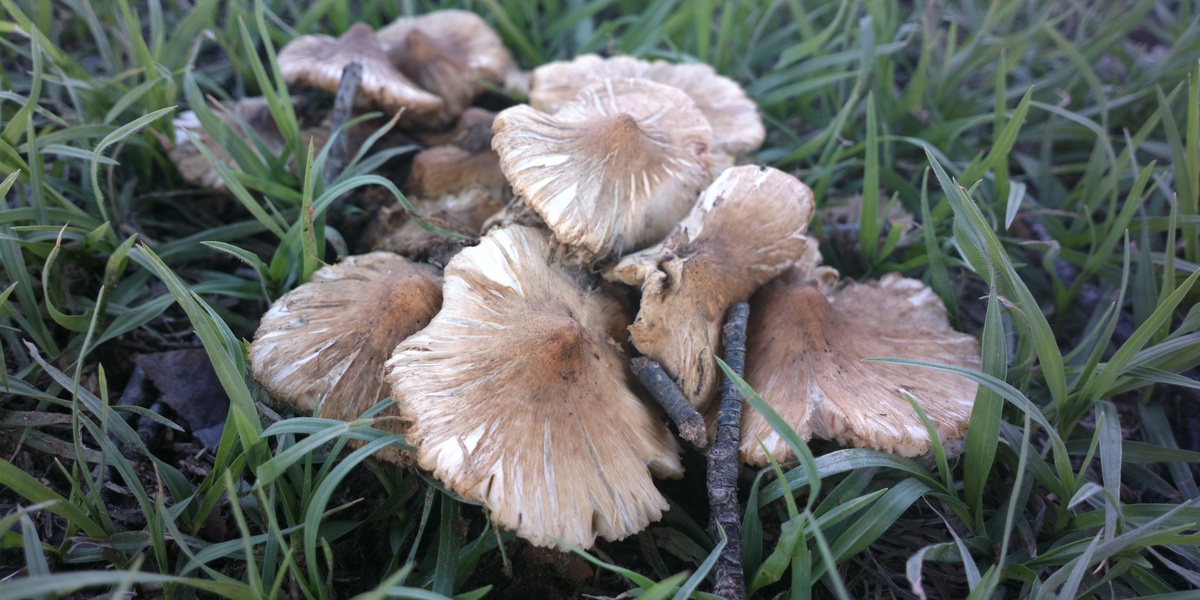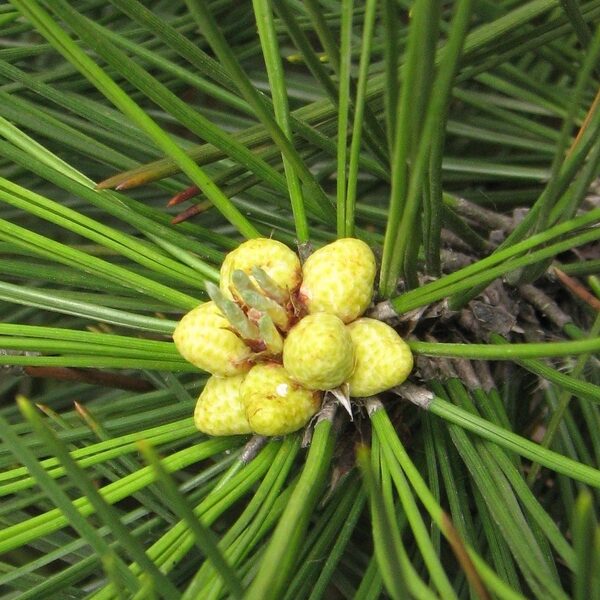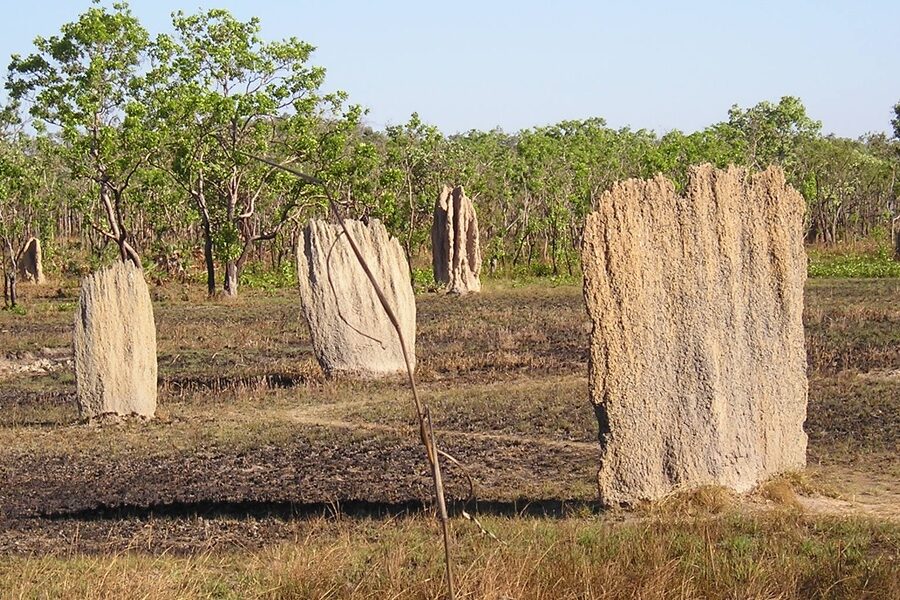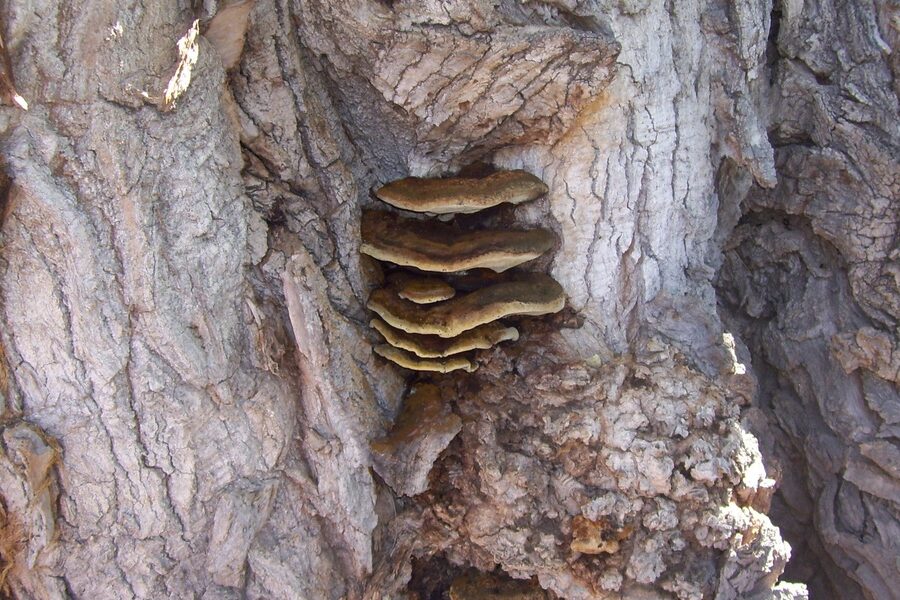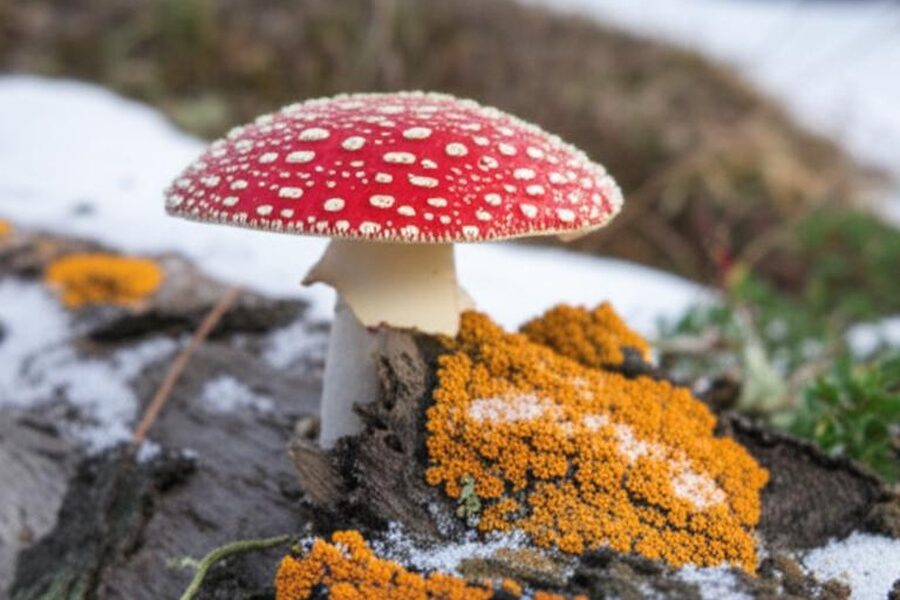Savannas are a mix of grassland and scattered trees where seasonal rains, fires, and grazing shape a unique web of life. Fungi here play vital roles breaking down dry grasses, forming soil networks and popping up after rains in places you might not expect.
There are 30 Savanna Fungi, ranging from African Blood-red Chanterelle to Woolly Chanterelle. For each species you’ll find below the columns Scientific name, Habitat & range, Edibility so you can compare where they grow and whether they’re known as edible or not — you’ll find those details below.
How can I safely tell which savanna fungi are edible?
Look for clear identification features (cap shape, gill or pore structure, spore color) and compare them with reliable regional field guides or local mycologists; many savanna species have toxic look-alikes. Never eat a mushroom unless you or an expert can confirm it, and when trying a trusted species for the first time, sample a small cooked portion and wait for any reaction.
When is the best time to spot fungi in savanna environments?
Fungi most often fruit in the rainy season or shortly after heavy showers, when moisture and decaying plant material are abundant; timing varies by region, so check local seasonal patterns and inspect shaded, grazed or burnt patches where decomposition accelerates.
Savanna Fungi
| Name | Scientific name | Habitat & range | Edibility |
|---|---|---|---|
| Termite Mushroom | Termitomyces titanicus | On or near termite mounds in West and Central African savannas. | Edible and highly prized. Cook thoroughly to avoid any digestive upset. |
| Omajowa | Termitomyces schimperi | On termite mounds of the *Macrotermes* genus in Namibian savannas. | Edible, a prized local delicacy. Must be cooked. Check for insects. |
| Small Termite Mushroom | Termitomyces microcarpus | On termite-processed wood and soil in African and Asian savannas. | Edible. Tiny size makes harvesting tedious. Often cooked in stews. |
| Kalahari Truffle | Terfezia pfeilii | Sandy soils, symbiotic with specific plants in Southern African savannas. | Edible, considered a delicacy. Found by tracking cracks in the soil. |
| Green-spored Parasol | Chlorophyllum molybdites | Grassy areas and open ground in savannas worldwide; very common. | Poisonous. Causes severe gastrointestinal distress. Do not eat. |
| Savanna Parasol | Macrolepiota zeyheri | Grassy open savannas and grasslands in Southern Africa. | Edible and excellent. Ensure it does not have green gills (*C. molybdites*). |
| Miombo Chanterelle | Cantharellus miomboensis | Miombo savanna woodlands of Central and Southern Africa. | Edible and choice, with a fruity aroma. Cook thoroughly. |
| African Blood-red Chanterelle | Cantharellus densifolius | Miombo savanna woodlands of the Congo basin and surrounding areas. | Edible and highly regarded. Its vibrant color is distinctive. |
| Savanna Bolete | Afroboletus luteolus | Mycorrhizal with trees in African savanna woodlands. | Edibility is uncertain; generally not consumed. Caution is advised. |
| Dung Roundhead | Panaeolus cyanescens | On herbivore dung in grassy savannas in tropical/subtropical regions. | Psychoactive. Possession and consumption are illegal in many countries. |
| Purple-staining Puffball | Calvatia cyathiformis | Open grassy areas, fields, and savannas; widespread globally. | Edible when the internal flesh is pure, solid white. Never eat when discolored. |
| Giant Puffball | Calvatia gigantea | Grassy savannas, meadows, and open woodlands; widespread. | Edible and choice when young and pure white inside. One specimen can feed many. |
| Beefsteak Fungus | Fistulina hepatica | On living and dead savanna trees like Marula and Oak. | Edible, with a slightly sour, meaty texture. Often eaten raw or cooked. |
| Dyer’s Polypore | Phaeolus schweinitzii | At the base of conifers in savanna margins and woodlands. | Inedible. Tough and unsuitable for consumption. |
| Turkey Tail | Trametes versicolor | On dead hardwood logs and stumps in savannas and woodlands worldwide. | Inedible as food, but widely used in traditional medicine as a tea. |
| Artist’s Conk | Ganoderma applanatum | On dead or living hardwood trees in savannas and forests globally. | Inedible due to its woody, tough texture. |
| Desert Shaggy Mane | Podaxis pistillaris | Dry, sandy soils in arid savannas and deserts worldwide. | Edible when young and firm inside. Becomes a sooty powder when mature. |
| Elegant Stinkhorn | Mutinus elegans | Wood chips and rich soil in savanna edges and gardens. | Inedible. The smell is extremely unpleasant, deterring consumption. |
| Fluted Bird’s Nest | Cyathus striatus | On woody debris, twigs, and bark mulch in open savanna woodlands. | Inedible due to its tiny size and tough texture. |
| Rock Shield Lichen | Xanthoparmelia conspersa | On exposed rocks and boulders in sunny savanna environments. | Inedible. Lichens are generally not consumed by humans. |
| Cracked-cap Bolete | Boletus-allied species | Mycorrhizal with various trees on savanna margins. | Many are edible, but precise species identification is critical. |
| Savanna Amanita | Amanita masasiensis | Mycorrhizal with trees in Miombo savanna woodlands of Africa. | Edibility unknown, likely poisonous. Avoid all savanna *Amanita* species. |
| Woolly Chanterelle | Gomphus floccosus | Mycorrhizal with trees in savanna woodlands and forests. | Not recommended. Known to cause gastrointestinal upset in some people. |
| Common Earthstar | Geastrum triplex | On rich soil and leaf litter in savanna woodlands. | Inedible. The tough, leathery texture makes it unsuitable for eating. |
| Carbon Balls | Daldinia concentrica | On dead hardwood, especially ash, in savanna-like open woodlands. | Inedible. The texture is hard, woody, and charcoal-like. |
| Eucalyptus Root-rot | Armillaria luteobubalina | Parasitic on roots of Eucalyptus and other trees in Australian savannas. | Edible but must be thoroughly cooked. Can cause upset if undercooked. |
| Red Cage Fungus | Clathrus ruber | On woody debris and in rich soils in gardens and savanna edges. | Inedible. Its foul smell of rotting meat is a powerful deterrent. |
| Jelly Ear | Auricularia auricula-judae | On dead and living elder and other hardwoods in savanna woodlands. | Edible, though more for texture than flavor. Popular in Asian cuisine. |
| White Saddle | Helvella crispa | On soil, often in disturbed areas or paths in savanna woodlands. | Edible only after thorough cooking. Poisonous when raw. |
| Weeping Bolete | Suillus granulatus | Mycorrhizal with pine trees, often on savanna/forest boundaries. | Edible, but the slimy cap skin should be peeled. Can cause allergic reactions. |
Images and Descriptions

Termite Mushroom
The world’s largest edible mushroom, with caps reaching up to 1 meter in diameter. It grows in a symbiotic relationship with termites, fruiting after heavy rains. Its massive size and meaty texture make it a significant seasonal food source in its native range.
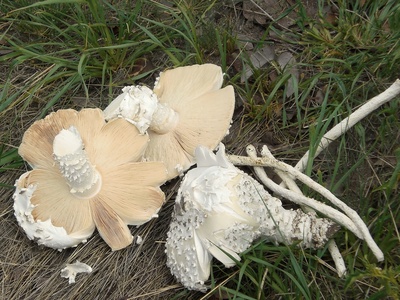
Omajowa
A large, robust, white mushroom that can grow to 40 cm in diameter. It is culturally significant in Namibia, where it is harvested after seasonal rains. The mushroom’s mycelium is cultivated by termites as their primary food, with the mushroom being the reproductive fruitbody.
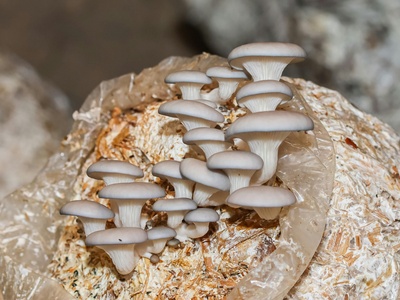
Small Termite Mushroom
This species fruits in huge numbers, creating a spectacular carpet of tiny white mushrooms. Unlike its larger relatives, it doesn’t grow directly from the mound but on substrate processed by termites. Each cap is only a few centimeters wide, but they appear by the thousands.
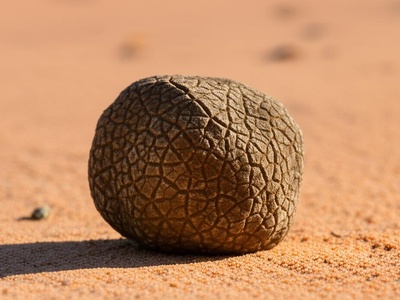
Kalahari Truffle
A famous desert truffle that grows entirely underground. It resembles a lumpy, brown potato and has a firm, creamy-white interior with a mild, nutty flavor. It is a vital food and water source for both people and wildlife in the Kalahari Desert.
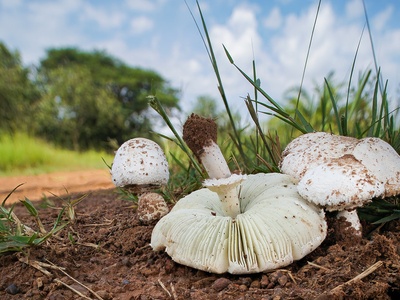
Green-spored Parasol
A large, scaly, white-capped mushroom that looks deceptively like edible parasols. Its key identifying feature is its gills, which mature from white to a distinctive grayish-green. This mushroom is a leading cause of poisonings due to its inviting appearance and commonness.
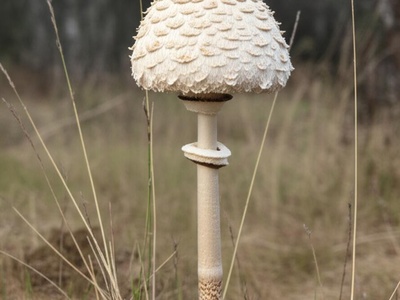
Savanna Parasol
A tall, elegant mushroom with a large, shaggy, cream-colored cap and a distinctive movable ring on its slender stem. It is a popular edible species, often found in “fairy rings.” It is a saprotroph, breaking down dead grass roots and organic matter.
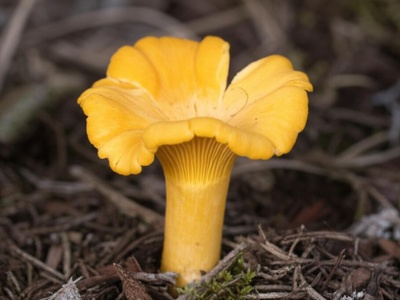
Miombo Chanterelle
A beautiful golden-yellow chanterelle associated with miombo trees. Instead of true gills, it has blunt, forking ridges that run down its stem. It is a mycorrhizal fungus, forming a beneficial partnership with tree roots, essential for the woodland’s health.
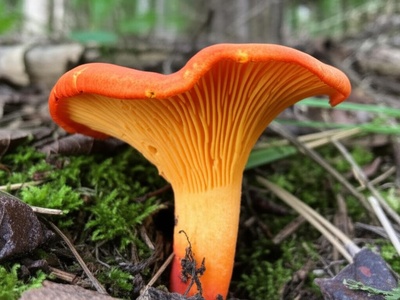
African Blood-red Chanterelle
This striking chanterelle is recognized by its deep reddish-orange to scarlet cap and crowded, brilliant orange ridges. Like other chanterelles, it’s a mycorrhizal species crucial to its associated woodland trees and is a sought-after edible mushroom for local consumption and trade.

Savanna Bolete
A unique bolete with a shaggy, almost spiky, dark cap surface. Underneath, it has pores instead of gills, typical of boletes. It plays a vital ecological role by forming mycorrhizal associations with native savanna trees, helping them absorb nutrients from the poor soil.
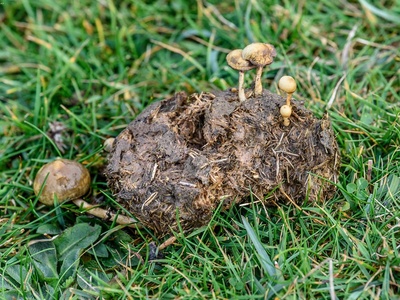
Dung Roundhead
A small, slender mushroom with a light brown to whitish cap that bruises blue when handled. It is a coprophilous (dung-loving) fungus that plays a role in nutrient cycling by breaking down the dung of large herbivores that graze in savannas.
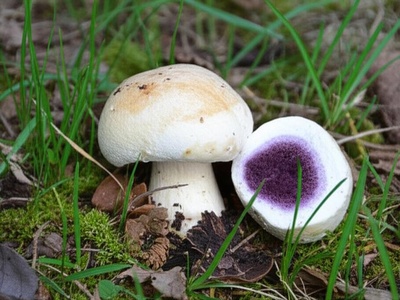
Purple-staining Puffball
A large puffball mushroom that can grow up to 20 cm wide. It has a smooth, whitish to tan exterior. When cut, the flesh stains yellow, then slowly lilac or purple. The mature spore mass is a distinctive purplish-brown.
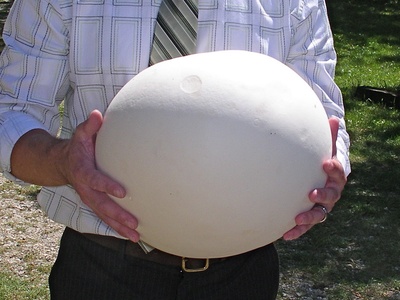
Giant Puffball
This massive puffball can grow to the size of a soccer ball or even larger, containing trillions of spores when mature. It is a saprotroph, breaking down dead organic matter in the soil. Its immense size and lack of a stem are its key features.
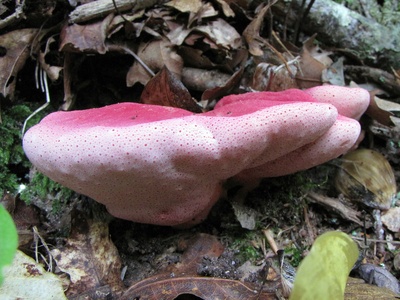
Beefsteak Fungus
A remarkable bracket fungus that looks like a slab of raw meat or a tongue, complete with a reddish-brown top and a pale, porous underside that “bleeds” a reddish juice when cut. It causes a desirable dark “brown oak” stain in its host wood.
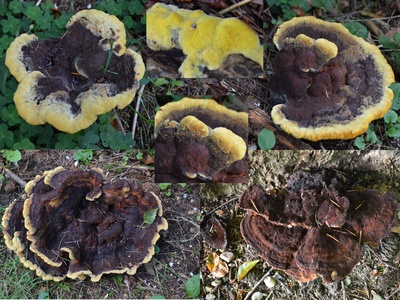
Dyer’s Polypore
A large, velvety, yellowish to rusty-brown polypore that causes a destructive butt rot in trees. It’s ecologically important as a decomposer. Historically, it was highly valued for its ability to produce yellow, orange, and brown dyes for textiles.
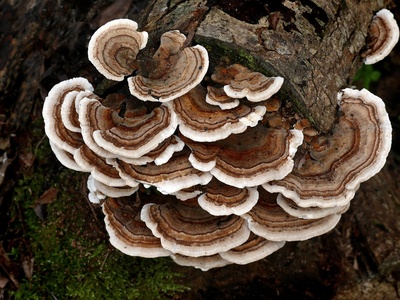
Turkey Tail
A very common and beautiful bracket fungus with multicolored concentric zones that resemble a turkey’s tail. It is a vital wood decomposer, breaking down lignin in dead trees. Its thin, leathery texture makes it easy to identify.
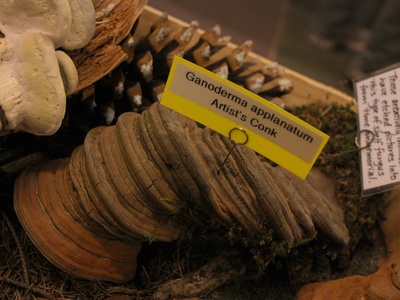
Artist’s Conk
A large, shelf-like perennial polypore. Its most fascinating feature is the pure white pore surface on its underside, which instantly and permanently stains brown when scratched or bruised, allowing people to draw detailed pictures on it.
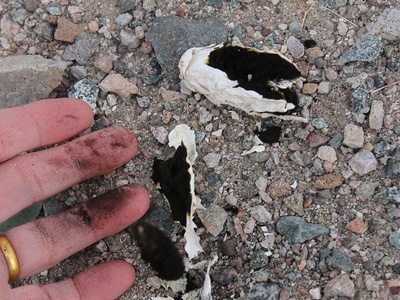
Desert Shaggy Mane
A bizarre-looking puffball relative that grows a stalk. It has a whitish, shaggy cap-like structure that contains the spore mass. At maturity, the outer layer disintegrates to release a black, powdery cloud of spores, earning it the name “False Shaggy Mane.”
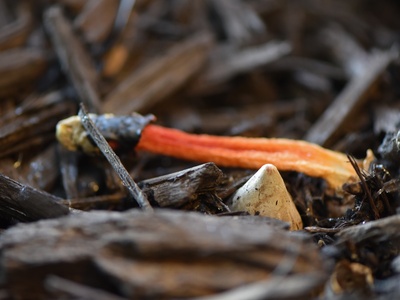
Elegant Stinkhorn
This fungus emerges from an “egg” as a slender, pinkish-red stalk tipped with a dark, foul-smelling spore slime. The putrid odor attracts flies and other insects, which then crawl on the slime and disperse the fungal spores to new locations.
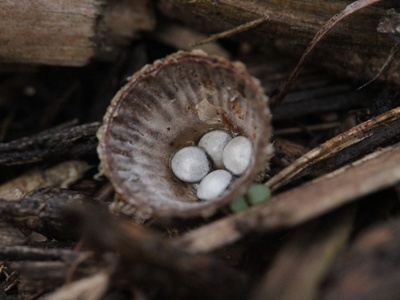
Fluted Bird’s Nest
This fascinating fungus forms tiny, vase-shaped cups that resemble miniature bird’s nests. Inside each “nest” are several small, egg-like structures called peridioles, which contain the spores. Raindrops splash these “eggs” out to disperse them.
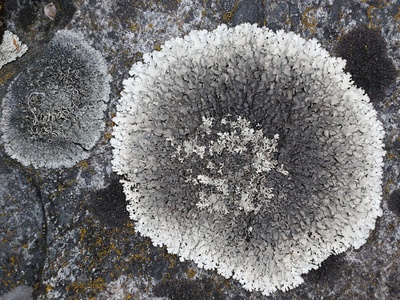
Rock Shield Lichen
A common foliose (leafy) lichen that forms distinctive yellow-green rosettes on sun-baked rocks. It is a composite organism of a fungus and an alga. It is extremely drought and heat tolerant, making it a successful colonizer of harsh savanna rock outcrops.
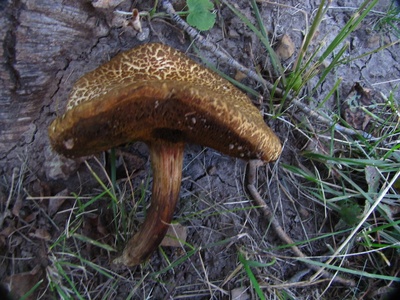
Cracked-cap Bolete
A group of boletes characterized by caps that crack and fissure with age, often revealing the flesh underneath. They have pores instead of gills and form essential mycorrhizal relationships that support the health of savanna trees, especially in drier climates.

Savanna Amanita
A species of *Amanita* specifically adapted to African savanna ecosystems. Like its relatives, it likely contains dangerous toxins. It is a mycorrhizal partner with native trees, showcasing the diversity of this famous and feared genus in savanna habitats.
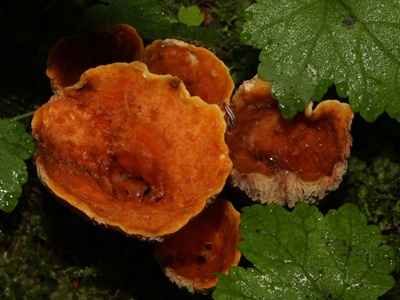
Woolly Chanterelle
Also known as the Scaly Chanterelle, this fungus has a distinctive vase or trumpet shape with a scaly, orange-to-yellow cap. Its underside has wrinkled ridges, not true gills. Though visually striking, its questionable edibility makes it one to admire rather than eat.
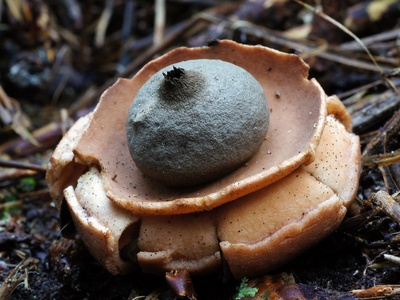
Common Earthstar
This earthstar begins as an onion-like ball. The outer layer peels back into star-like “rays,” revealing a central puffball that holds the spores. A small pore at the top releases puffs of spore “smoke” when disturbed by raindrops or animals.
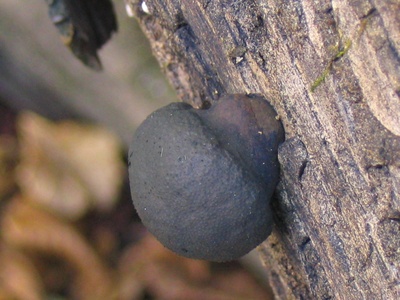
Carbon Balls
These fungi form hard, hemispherical lumps on dead wood that look like pieces of charcoal. When sliced open, they reveal beautiful concentric silver and black layers, which are growth rings. They are important decomposers of tough, woody material.
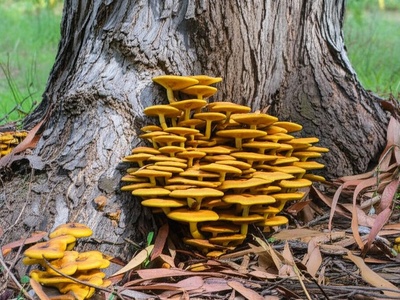
Eucalyptus Root-rot
Known as the Australian Honey Fungus, this species is a significant native pathogen in eucalyptus woodlands. It fruits in clusters of honey-colored mushrooms at the base of trees and is also a primary decomposer, playing a dual role in the ecosystem.
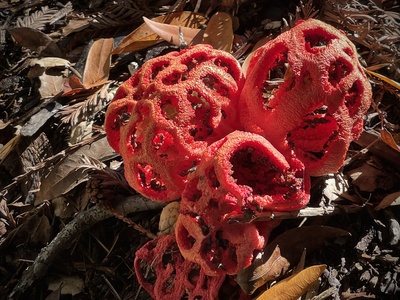
Red Cage Fungus
A spectacular and bizarre stinkhorn that forms a hollow, latticed sphere of reddish, spongy arms. It emerges from a whitish “egg.” The inner surface is coated in a smelly, olive-green spore slime that attracts flies for spore dispersal.
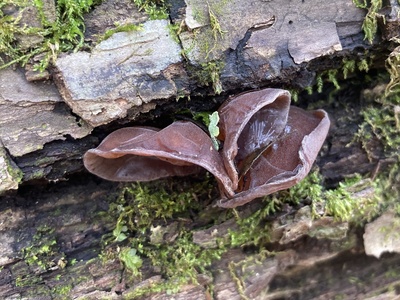
Jelly Ear
This fungus forms rubbery, gelatinous, ear-shaped brackets on wood. They are typically brown and can dry out to a hard, brittle state, impressively rehydrating back to their gelatinous form after rain. They are important wood decomposers.
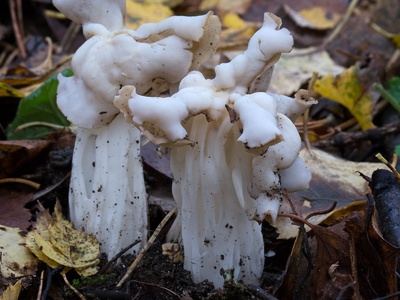
White Saddle
A unique “false morel” with an irregularly lobed, saddle-shaped, whitish cap and a deeply ribbed, chambered stem. It is a fascinating find but requires careful preparation, as it contains compounds that are toxic unless broken down by heat.
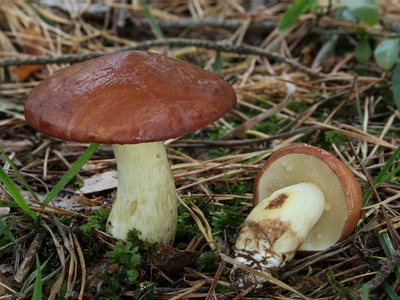
Weeping Bolete
A common bolete found with pines, recognizable by its sticky, yellowish-brown cap and the milky droplets that “weep” from its pores when young. It is a vital mycorrhizal partner for pine trees, which are often found in certain savanna transition zones.
